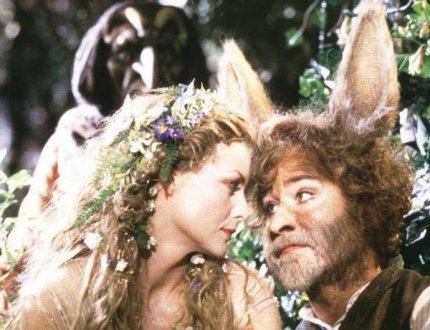
Shakespeare uses several ways to portray humor, which is the reason behind his massive success. “A Midsummer Night’s Dream” is another massively applauded blend of love and humor by William Shakespeare. This paper focuses on elaborating on how he uses humor in his play.
One way that Shakespeare uses humor in this play is by using simple humor, which is easy to interpret in any way. He does so this by creating artisans. The artisans, obviously are not intelligent at all, but continually pretend to be.
They mess up grammar, spellings, and everything that the author of “Pyramus and Thisby” had wanted for his play. For instance, when Bottom says: “Thisbe, the flowers of odious savors sweet,” he was supposed to say ‘Odors’ instead of ‘odious’ in the sentence.
Odors mean “fragrant smells,” while ‘odious’ means “repulsive.” An obscure mistake, which often goes unnoticed, could simply change the meaning of the whole sentence.
This humor is apparent to everybody noticing that Bottom had made a mistake. This type of humor, while evident, sometimes doesn’t portray the true meaning behind it. In some cases, Inferred humor would be more suitable for such scenarios.
Shakespeare also uses something similar to inferred humor to get across multiple meanings that he wants to convey. A relevant example is the character of Puck. Puck is a hyperactive child that gets into a lot of trouble for his roguish behavior. He has a light and airy attitude toward his chores. He does not take life very seriously and does what he finds intriguing.
This mischievous behavior makes this character completely different than everyone else in the play. With most characters leaning towards a more serious approach, Puck is just dancing around while pulling pranks on everyone. For instance, Puck placed an Ass’ head on its Bottom, which was unnecessary, but seemed fun. These pranks, combined with the contrasting attitude compared to other characters, are what made Puck so funny.
An example of the seriousness of other characters would be Lysander. He was bound up in love for Hermia and Helena in different parts of the play. He was always serious and often gloomy as Hermia was forced to marry Demetrius, which was sort of equivalent to a tragedy. Puck, on the other hand, was simply focused on having a good time.
Shakespeare also uses humor by portraying instances that never happen in real life. For example, after Lysander and Demetrius had led around the king’s oak for a long time, they fell and went to sleep. This event shows that Shakespeare’s humor was bound by no logic whatsoever since they are trying to kill one another, and a person is usually defenseless when asleep.
There is humor in that because everyone took it in stride, so to say. The play portrayed that this is supposed to happen. In another instance, when Titania awakens after being in love with Bottom, she knows that Oberon did it, but she’s not angry at the fact that he did, or the fact that Oberon used the time to capture the Indian boy.
Likewise, this made little sense, but it was humorous, which was what Shakespeare intended. In “A Midsummer Night’s Dream,” there is a lot of humor, which makes it an excellent play and a comedic marvel. He was a master at his work, which reflects in all his plays. Humor is the major ingredient for the success of this play, and the careful mix of all types of humor makes this play a nice potpourri of tragedy and comedy.
